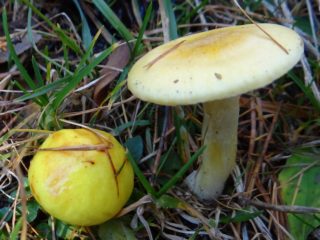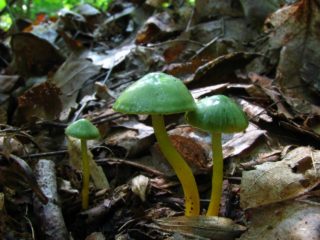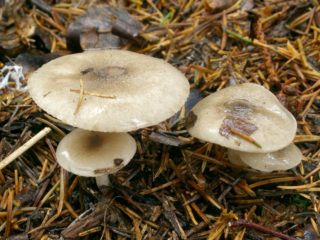Content
Fragrant hygrophorus (Hygrophorus agathosmus) - one of the representatives of the numerous kingdom of mushrooms. Despite its conditional edibility, it is not in great demand among mushroom pickers. Some do not like the taste of fruit bodies, others simply do not know that they can be harvested.
Gigroforus fragrant, aromatic, Agaricus agathosmus, Agaricus cerasinus - the names of the same mushroom.
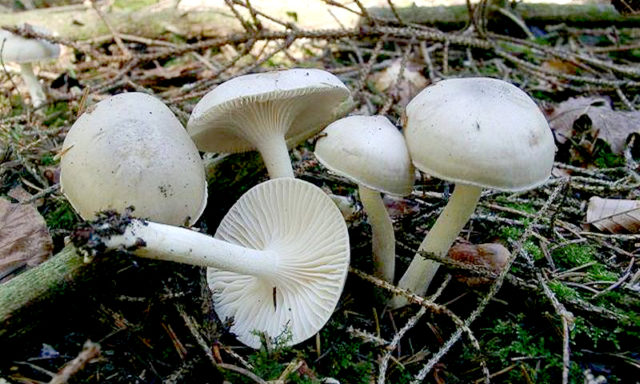
Not everyone dares to put unfamiliar gifts of the forest in the basket, despite their attractive appearance.
What does a fragrant hygrophor look like?
Fragrant Gigrofor can be distinguished from other mushrooms by their appearance.
The fruiting body has a medium-sized cap, with a diameter of 3 to 7 cm. When the fungus just appears above the ground, this part is convex, but gradually straightens, only a tubercle remains in the center. The skin on the cap is not rough, but slippery, as it contains mucus. It is grayish in color, olive-gray or yellow, slightly lighter towards the edges.
Fragrant gigrofor belongs to lamellar mushrooms. His plates are white, thick, and sparsely located. In young fruiting bodies, they are adherent. Gradually diverge, at the same time change color. In adult hygrophors, the plates are dirty gray.
Mushrooms are distinguished by high (about 7 cm) and thin (no more than 1 cm in diameter) legs. They are in the form of a cylinder, which is thicker at the base. Themselves of a gray or gray-brown shade. The entire surface is covered with small flake-like scales.
The flesh of the fragrant hygrophor is white, soft in dry weather. When it rains, it becomes loose, watery. The taste of mushrooms is sweetish with the aroma of almonds.
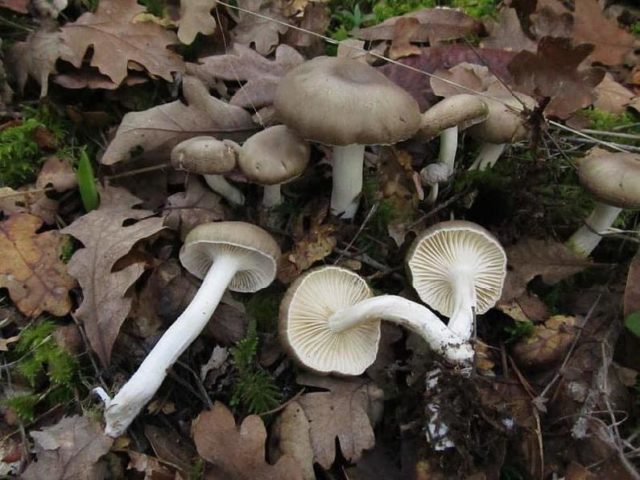
When it rains, it is not difficult to find a hygrophor, since the smell spreads tens of meters from the mushroom place.
Where the fragrant hygrophor grows
Most often, the species can be found in mountainous areas, where there are moist mossy coniferous forests. Sometimes it grows in mixed forest belts, under oak and beech trees.
It is not afraid of frost, therefore, the collection continues even in September-October and early November. The representative grows in groups, less often one by one.
Is it possible to eat fragrant hygrophor
This species is classified as conditionally edible. But it is not used as a basis for a dish, but only added to other fruiting bodies. It's all about the pronounced aroma.
Fragrant gigrofor is a useful gift of the forest, it contains a large number of:
- vitamins B, A, C, D, PP;
- various amino acids;
- phosphorus and calcium, potassium and sulfur, sodium and manganese, zinc and iodine;
- protein - its content is such that fruiting bodies are equated with meat.
False doubles
Almost all mushrooms have twins, and the fragrant hygrophor also has them.There are only two of them, but both can be eaten. So if these mushrooms are confused, there will be nothing terrible:
- Hygrophorus secretanii. Differs in a bright red color of the cap, plates, legs;
Mushroom smells the same as fragrant, almonds
- Hyacinth hyacinth. The edible mushroom got its name for the aroma of flowers.
The leg has no scales, it is smooth
Collection rules and use
Going to the forest for a quiet hunt, you need to stock up on a basket and a knife with a sharp blade. Fragrant hygrophors are cut off at the very base, so as not to destroy the mycelium.
The mushrooms brought home need to be sorted out, then cleaned of earth, needles or foliage. Cover with cold water and rinse each fruiting body. Then clean the cap from the mucous skin and also the legs.
All parts of the fruit can be used for culinary delights. The taste of boiled, fried, salted or pickled mushrooms is pleasant and delicate. The pulp remains firm, hardly boiled down.
Fried hats and legs in sour cream with onions or green onions are very tasty. Julienne, mushroom soup, sauce are excellent.
The Chinese use fragrant hygrophor for the preparation of a delicious liqueur in milk. In their opinion, the use of a healthy drink strengthens the immune system, removes toxins and other harmful substances from the body.
Conclusion
Fragrant gigrofor is safe and conditionally edible, although not everyone can use it. The fact is that the fruiting bodies contain a lot of fiber, you need to eat the product in moderation, otherwise heartburn will appear. Children under 14 years old, as well as pregnant, lactating women in case of individual intolerance and allergies, are also not recommended to use such a crop.




